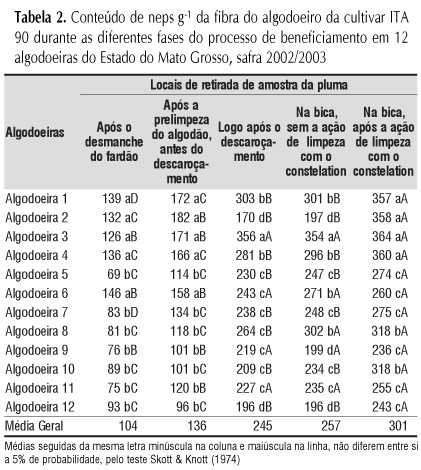The purpose of this work was to study the ginning effect on the amount of cotton contaminants, dust and neps in cotton fiber, in 12 industries in the Mato Grosso State. The experiment consisted of a factorial combination over five stages of ginning and 12 cotton industries using a randomized design with four replications. Some samples of cotton were collected in the following phases: a) in the bale dismantling; b) before the ginning; c) right after ginning; d) into the covered lint slide not using the saw lint cleaner; and e) into the covered lint slide, after cleaning process using the saw lint cleaner system. Over all stages four standard samples of lint with 350 g were collected to be analyzed by the AFIS instrument (Advanced Fiber Information System), for determining the content of trash, dust and the number of neps in the cotton fiber. The results indicate that the processes of cotton pre-cleaning and fiber cleaning reduced significantly the amount of cotton trash and dust, while that jointly with the ginning, these processes increased the number of neps in cotton fiber. The use of the saw lint cleaner system increases the efficiency of fiber cleaning, but causes considerable rise in the number of neps.
quality of fiber; fiber defects; ginning




